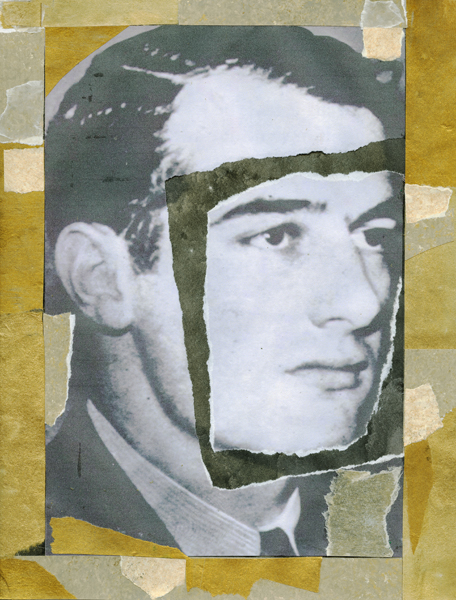
Immortalized as a genuine hero, Raoul Wallenberg was one of the most famous men in the history and memory of the Holocaust. He was born in 1912 into a powerful Swedish non-royal family, a family of bankers, diplomats, and politicians. His father died several months before Raoul was born and his grandfather, Gustav Wallenberg, a successful businessman, took responsibility for the young Wallenberg’s academic and professional future.
Instead of banking and business, Wallenberg chose the field of architecture. He traveled to the United States where he received a bachelor’s degree in science from the University of Michigan in 1935. He returned to Sweden hoping to join an architectural firm, but his non-European academic diploma was not seen as a worthy qualification. Therefore, his grandfather sent him to learn both business and banking skills in South Africa and in the British mandate of Palestine in the city of Haifa.
Returning to Sweden in 1937, Wallenberg entered the world of business, equipped with excellent language skills and business contacts. He soon established a partnership with Kolman Lauer, a Hungarian Jew who was the director of a Swedish-based import and export firm specializing in various forms of food and delicacies. That relationship brought Wallenberg to Hungary on several occasions.
During the early 1940s, Raoul Wallenberg visited Hungary many times and saw for himself the growing plight of Hungary’s Jewish community. Germany invaded Hungary on March 19, 1944, and Hitler ordered the deportation of Hungarian Jewry to Auschwitz-Birkenau.
By that time, the Swedish government had completely changed its policies toward Jews seeking a place of refuge. Initially, at the outbreak of World War II, Sweden would not allow Jews to enter, even temporarily. But by 1944, it had reversed its policy and become the first nation to publicly announce that it would accept any Jews who could make their way to Sweden.
In January, 1944, President Franklin Delano Roosevelt had finally created an American governmental institution, the War Refugee Board (WRB), committed to saving the few Jewish communities that had not yet been liquidated by the Nazis, primarily those Jews who had been allowed to live in Budapest. By the time the War Refugee Board began to take steps toward the rescue effort, more than 400,000 Hungarian Jews, primarily from areas outside of Budapest, were deported to the death camp at Auschwitz-Birkenau. The operation took place between May 14 and July 18.
The WRB contacted the Budapest Jewish community and asked for individuals who would work with the American agency. They also asked for Swedish representatives to be a part of the committee. One of the Hungarian Jewish members of the group was Kolman Lauer, Raoul Wallenberg’s Hungarian Jewish business partner. Lauer nominated Wallenberg, and he was approved by the Swedish government and appointed secretary at the Swedish legation in Budapest as a cover for his mission to rescue Budapest’s Jewish community.
Wallenberg arrived in Budapest in July and immediately began to design and distribute yellow and blue protective passes carrying the coat of arms of the Three Crowns of Sweden. He eventually was able to distribute over 4,500 of them which meant that those Jews carrying the pass did not have to wear the Jewish yellow star as a badge of identification, thus saving them from deportation.
Wallenberg and his staff of Swedish diplomats continued the rescue efforts. He created “Swedish Houses,” where Jews could seek refuge. Blue and yellow Swedish flags hung in front of these houses, more than 30 of them, and Wallenberg declared them Swedish territory. At least 15,000 Jews were able to reach these “protective” houses.
Soviet forces surrounded Budapest at the end of December 1944. By mid-January they had captured control of the city, arresting Raoul Wallenberg on orders from Moscow. The reasons were never made clear, but the fact that he was working on behalf of the War Refugee Board probably convinced the Soviets that he was an American spy.
From that time until the present, the whereabouts of Raoul Wallenberg have remained a mystery. In 1957, the Soviet Union announced that Wallenberg had died in his prison cell probably of a heart attack and that his body was cremated without an autopsy. Then in October 1989, the Soviet Union invited Wallenberg’s half brother and sister to Moscow and gave them the items that had been seized from him when he was arrested including his diplomatic passport and his address book. They also told his family members that nearly all of Wallenberg’s case files had been destroyed.
Raoul Wallenberg, with help from other Swedish diplomats, prevented the deportation of nearly 20,000 Budapest Jews. He was also able to persuade German authorities not to liquidate the city’s so-called “international Jewish ghetto” and its 70,000 residents who would surely have been massacred by the Nazis as a last-ditch effort to destroy the Jewish community.
Wallenberg’s courage and imagination allowed thousands to survive and live full lives. The tragedy was that he was unable to live a life of his own. He has been made an honorary citizen of several nations including the United States and Israel.


